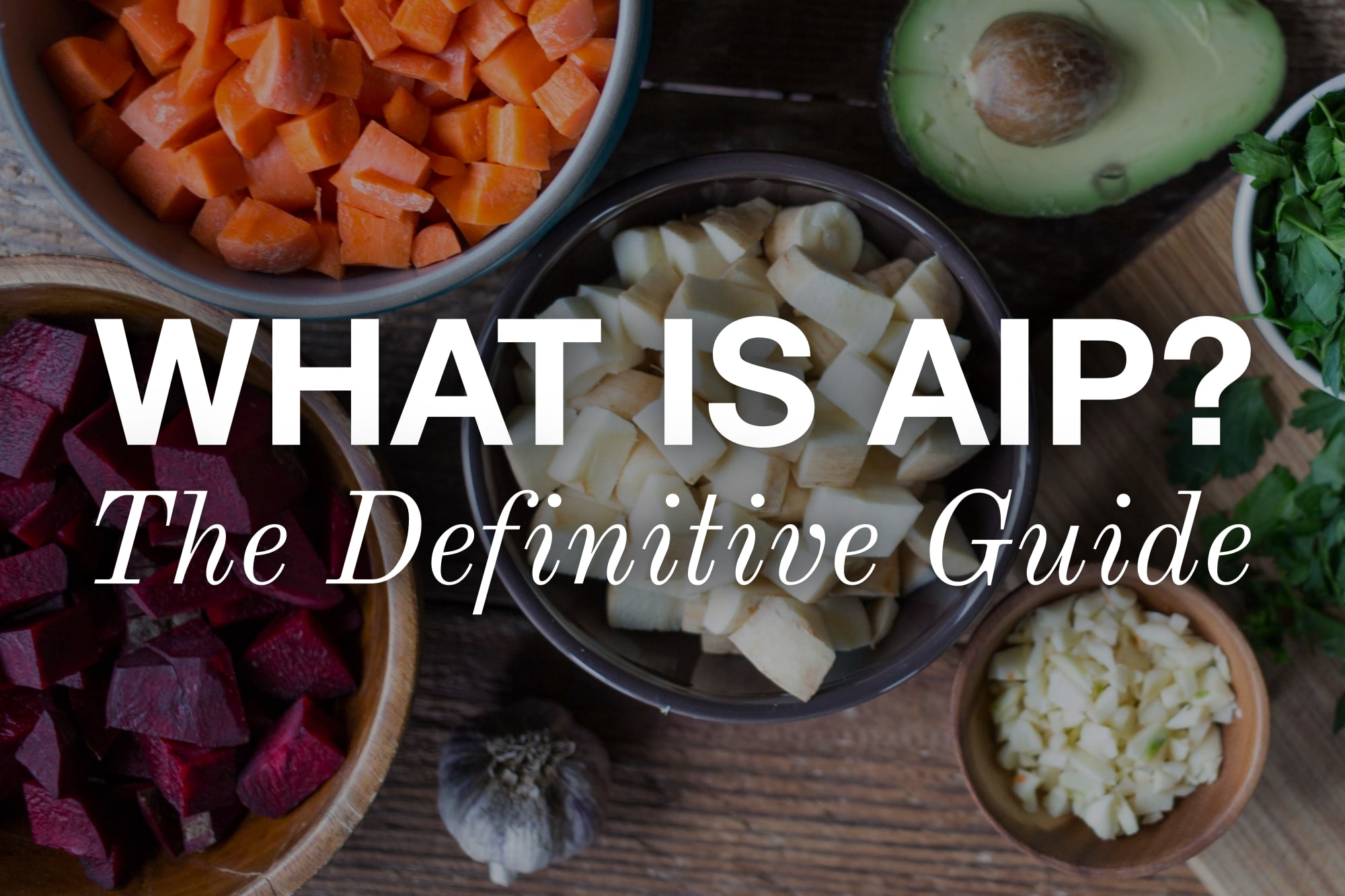
NOTE: This post has been updated as of May 2024 and reflects the most recent updates to the Autoimmune Protocol. Keep this page bookmarked to stay informed on the most current protocol instructions that reflect emerging nutritional science, straight from the source.
Important: You are here because you’d like all of the details about the Autoimmune Protocol, otherwise known as AIP. AIP has been around for over a decade and there are various sources for protocol information, both online and in print. At this point, some resources contain inaccurate information or are simply out of date. Before beginning, understand that this page (and the Autoimmune Wellness site as a whole) is the best and most accurate public resource for information about AIP, because it adheres to the latest updates and research as taught in the AIP Certified Coach Practitioner Training Program. This post will teach you everything you need to know to get started with the Autoimmune Protocol, as well as link to resources for further learning or to assist in preparing to begin.
What is AIP?
The Autoimmune Protocol is a science-based elimination and reintroduction diet and lifestyle protocol. It focuses on repairing gut health, balancing hormones, and regulating the immune system. The dietary component includes removing food-driven sources of inflammation and restoring nutrient density, while the lifestyle component includes approaches to sleep, stress management, movement, and connection (both with humans and nature), in order to help best manage autoimmune disease.
AIP has been used successfully alone or in combination with conventional treatments, depending on a person’s needs. Medical research into the efficacy of AIP has been performed with patients having Hashimoto’s thyroiditis, rheumatoid arthritis, Crohn’s disease, ulcerative colitis, eczema, and psoriasis, with more publications coming soon.
Who created and maintains AIP?
The Autoimmune Protocol has roots in the Paleo diet and functional medicine communities. Healthcare providers and writers with medical or research backgrounds began to add some detail to an originally bare-bones concept. In 2012, Dr. Sarah Ballantyne, motivated by her personal experience with autoimmune disease and experimentation with the elimination phase herself, began to use her Ph.D.-level education in medical biophysics to research, refine, and write extensively about the protocol, which formed the foundations of the AIP movement. You can read more about the origins of AIP in the post The History of the AIP Movement.
Today, the Autoimmune Protocol has been refined and maintained by researchers studying its efficacy for various autoimmune conditions, and the practitioner community of AIP Certified Coaches who have been integrating the protocol into their work with their patients and clients. Now that the Autoimmune Protocol has been in widespread use for over a decade, medical researchers and practitioners implementing AIP have recognized that in many cases the original protocol may be more restrictive than necessary and that very good results could still be achieved when their clients and patients were given a less restrictive list of foods to avoid. Therefore, there are now two versions of the Elimination Phase, which are known as AIP Core Elimination and AIP Modified Elimination.
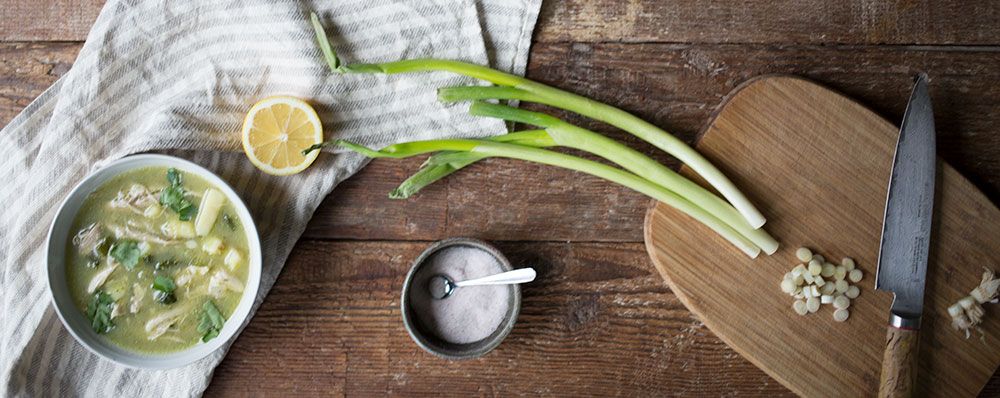
Before we get into the lists of which foods are in each version, it is important for you to understand that the Elimination Phase of AIP is just one portion of the dietary component of the protocol.
The three phases of AIP
Transition phase
Transition is the process of moving one’s diet to the elimination phase, with a focus on nutrient-density. Some people transition slowly, removing foods one or two at a time over a period of weeks or even months, while others transition quickly, like over a weekend. In general, taking the time to make a slow, prepared transition to the elimination diet is best for most people.
Elimination phase
Elimination is the period following full transition, when the person is only eating foods compliant with the elimination phase. The focus is to maintain the food eliminations while concentrating on nutrient-dense additions, with a goal to maximize healing. Elimination needs to be 30 days at a minimum for everyone, as this cleans the slate for a clear reintroduction process. For most, 60-90 days in Elimination is ideal and allows the most healing.
Reintroduction phase
Reintroduction begins after a person has spent 30-90 days fully compliant in the elimination phase and has had measurable improvements in their symptoms from their baseline as evidenced from tracking and journaling (and/or lab testing). Ideally, there will be relief of symptoms. The goal of the reintroduction phase is to determine an individualized, sustainable (both practically and socially), and nutrient-dense diet. It should be the least-restrictive diet that gives them the best health.
The elimination phase: Two options
Now that you understand the basics of the phases, we’ll dive into details about the elimination phase, including which foods are temporarily removed from the diet. As mentioned above, there are two versions of the elimination phase to choose between, which are detailed below.
Originally, the Autoimmune Protocol was conceived as a standard elimination protocol and that is what has been implemented for years both by individual wellness-seekers and medical researchers in the AIP intervention studies. This original version has not changed, but is now called AIP Core Elimination.
In 2024, the Autoimmune Protocol was updated to include a second option for the elimination protocol, this one modified to include a more expansive list of foods as indicated by the results of medical research and the clinical experience of practitioners implementing AIP with their clients and patients for over a decade. This new, less restricted version is called AIP Modified Elimination.
Whether a person decides to embark on the AIP Core or AIP Modified elimination protocols is dependent on their practitioner guidance, health conditions, disease severity, ability to implement, cooking skill or ability, food access or budget, family support, time, and other factors.
AIP Core Elimination foods to avoid
- Grains (including ingredients derived from them): Barley, corn, durum, fonio, Job’s tears, kamut, millet, oats, rice, rye, sorghum, spelt, teff, triticale, wheat (all varieties, including einkorn and semolina), and wild rice.
- Gluten: Barley, bulgur, farro, rye, wheat, and foods derived from these ingredients.
- Pseudo-grains and grain-like substances: Amaranth, buckwheat, chia, and quinoa.
- Dairy: Butter, buttermilk, butter oil, cheese, cottage cheese, cream, cream cheese, curds, dairy-protein isolates, ghee, heavy cream, ice cream, kefir, milk, sour cream, whey, whey-protein isolate, whipping cream, and yogurt.
- Eggs: Chicken eggs, duck eggs, goose eggs, quail eggs, or any other type of egg.
- Legumes: Adzuki beans, black beans, black-eyed peas, butter beans, calico beans, cannellini beans, chickpeas (aka garbanzo beans), fava beans (aka broad beans), Great Northern beans, green beans, Italian beans, kidney beans, lentils, lima beans, mung beans, navy beans, pinto beans, peanuts, peas, runner beans, split peas, and soybeans (including edamame, tofu, tempeh, other soy products, and soy isolates, such as soy lecithin).
- Nightshades (including spices derived from them): Ashwagandha, bell peppers, cayenne peppers, cape gooseberries (ground cherries, not to be confused with regular cherries), eggplant, garden huckleberries (not to be confused with regular huckleberries), goji berries (aka wolfberries), hot peppers (chili peppers and chili-based spices), naranjillas, paprika, pepinos, pimentos, potatoes, tamarillos, tobacco, tomatillos, and tomatoes.
- Processed vegetable oils: Canola oil (rapeseed oil), corn oil, cottonseed oil, grapeseed oil, palm kernel oil, palm olein, peanut oil, safflower oil, sunflower oil, and soybean oil.
- Nuts and nut oils: Almonds, Brazil nuts, cashews, chestnuts, hazelnuts, macadamia nuts, pecans, pine nuts, pistachios, or walnuts, or any flavors, flours, butters, oils, or other products derived from these nuts.
- Seeds (including oils and spices derived from them): Allspice, anise, annatto, black caraway (Russian caraway, black cumin), cardamom, celery seed, chia, chocolate, cocoa, coffee, coriander, cumin, dill seed, fennel seed, fenugreek, flax, hemp seeds, juniper, mustard, nutmeg, pepper, poppy, pumpkin seed, sesame, and sunflower.
- Nonnutritive sweeteners and sugar alcohols: Acesulfame potassium, aspartame, erythritol, mannitol, neotame, saccharin, sorbitol, stevia, sucralose, and xylitol.
- Processed food chemicals and ingredients: Acrylamides, artificial food color, artificial and natural flavors, autolyzed protein, brominated vegetable oil, emulsifiers (carrageenan, cellulose gum, guar gum, lecithin, xanthan gum), hydrolyzed vegetable protein, olestra, phosphoric acid, propylene glycol, textured vegetable protein, trans fats (partially hydrogenated vegetable oil, hydrogenated oil), yeast extract, and any ingredient with an unrecognized chemical name.
- Alcohol: Beer, liquor, mead, wine, or similar products.
AIP Modified Elimination foods to avoid
- Cereal grains (except rice): Barley, bulgur, corn, durum, farro, fonio, Job’s tears, kamut, millet, oats, rye, sorghum, spelt, teff, triticale, and wheat (all varieties, including einkorn and semolina).
- Gluten: Barley, bulgur, farro, rye, wheat, and foods derived from these ingredients.
- Dairy (except ghee): Butter, buttermilk, butter oil, cheese, cottage cheese, cream, cream cheese, curds, dairy-protein isolates, heavy cream, ice cream, kefir, milk, sour cream, whey, whey-protein isolate, whipping cream, and yogurt.
- Eggs: Chicken eggs, duck eggs, goose eggs, quail eggs, or any other type of egg.
- Nightshades (including spices derived from them): Ashwagandha, bell peppers, cayenne peppers, cape gooseberries (ground cherries, not to be confused with regular cherries), eggplant, garden huckleberries (not to be confused with regular huckleberries), goji berries (aka wolfberries), hot peppers (chili peppers and chili-based spices), naranjillas, paprika, pepinos, pimentos, potatoes, tamarillos, tobacco, tomatillos, and tomatoes.
- Soy: Edamame, miso, natto, tamari, tempeh, tofu, or other products derived from soy (including soy cheese, milk, protein, ice cream, sauce, and others).
- Tree nuts and peanuts (including ingredients derived from them): Almonds, Brazil nuts, cashews, chestnuts, hazelnuts, macadamia nuts, peanuts, pecans, pine nuts, pistachios, or walnuts.
- Nonnutritive sweeteners and sugar alcohols: Acesulfame potassium, aspartame, erythritol, mannitol, neotame, saccharin, sorbitol, stevia, sucralose, and xylitol.
- Processed food chemicals and ingredients: Acrylamides, artificial food color, artificial and natural flavors, autolyzed protein, brominated vegetable oil, emulsifiers (carrageenan, cellulose gum, guar gum, lecithin, xanthan gum), hydrolyzed vegetable protein, olestra, phosphoric acid, propylene glycol, textured vegetable protein, trans fats (partially hydrogenated vegetable oil, hydrogenated oil), yeast extract, and any ingredient with an unrecognized chemical name.
- Alcohol: Beer, liquor, mead, wine, or similar products.
Looking to download printable versions of the Core or Modified AIP Foods to Avoid and Foods to Include? Sign up below to have them sent to your inbox!
What are the differences between Core and Modified AIP?
Modified AIP includes rice, pseudo-grains, ghee, legumes (except soy), and seeds (including coffee and cocoa). While these ingredients are eliminated in Core AIP, our analysis of the AIP research and feedback from the AIP Certified Coach community indicates that these eliminations are not often problematic for autoimmune patients and they make the elimination phase much more convenient, affordable, and sustainable.
What is the scientific basis of the elimination phase?
Almost all of the medical research performed thus far on the Autoimmune Protocol has been using AIP Core Elimination, and shows promise in managing quality of life and symptoms in conditions like Hashimoto’s thyroiditis, Crohn’s disease, ulcerative colitis, and rheumatoid arthritis.
Though the exact mechanism for the efficacy of the Autoimmune Protocol in these populations is not fully understood, some theories include avoiding foods a person is unknowingly allergic or sensitive to, the inclusion of anti-inflammatory foods, the inclusion of nutrient-dense foods, increasing fiber, increasing vegetable intake, and supporting a healthy microbiome, among others. Since the interventions in the AIP medical studies also included ongoing support from AIP Certified Coaches and changes in lifestyle areas like sleep, stress-management, movement, and connection, their role must be considered as well.
Nutrient-dense additions
One leading theory for the efficacy of the Autoimmune Protocol relates to the nutrient-density of the overall diet. Therefore, both AIP Core Elimination and AIP Modified Elimination call for adding in extra nutrient-dense foods that are crucial to success and compounding healing.
These nutrient-dense additions include:
- Healthy fats (like olive and avocado oils)
- Bone broth
- Organ meats
- Colorful fruits and vegetables
- Fermented foods
- Fish and shellfish
This list includes incredibly nutrient-rich foods that can help fuel deep healing. Overall these additions represent, ounce-for-ounce, the most nutrient-varied and nutrient-dense foods we can consume, as well as foods that tend to be anti-inflammatory. You can read more about this concept in the article The Argument for Nutrient Density.
The reintroduction phase: what and why?
Whether utilizing the AIP Core or AIP Modified Elimination list, it is important to remember that entering the reintroduction phase is an important and essential part of the protocol. During the reintroduction phase, a person progresses through a process of testing their response to the foods they’ve eliminated, one-at-a-time. The foods are best tested in a specific order, beginning with foods that are most nutrient-dense and least likely to cause a reaction and moving toward foods that are least nutrient-dense and most likely to cause a reaction. This is done in a systematic, staged process that can take a few months when done carefully. This hard work is rewarded when each person discovers a unique dietary approach that supports their best health. You can learn more details about this process at the Definitive Guide to Reintroductions.
The Reintroduction Phase is critically important. In fact, staying in the elimination phase for longer than necessary can be problematic and cause harm long-term. After the reintroduction phase, each person arrives at the least-restrictive diet that promotes their own individual best health. Each individual is working towards personalization and their end result will look different from any other person, even with shared conditions or symptoms.
There is also a nutrient-density argument to reintroducing foods. Some of the foods initially eliminated, especially if utilizing AIP Core, are a valuable source of nutrients. It’s also true, both from a practical and social sustainability standpoint, that reintroductions are a wise step. Finally, there is psychological benefit in working towards expanding the diet as wellness returns, rather than allowing food-driven fears to take hold.

Implementation: How do you do AIP?
Now that you understand what AIP is, how it was developed, the two options for the elimination phase and some reintroduction basics, it’s time to talk about how to actually adopt the protocol. For practicality sake we’ll explore implementation by each phase.
Implementation: transition phase
During the Transition Phase, each person gets to choose whether they want to move slowly, or quickly towards a fully-compliant elimination phase (either AIP Core or AIP Modified eliminations).
A slow transition is a gradual, phased approach to eliminating the foods that are initially avoided on AIP, starting with those foods which are least nutrient dense and most likely to be driving symptoms. It is much more gentle and often more sustainable, plus a good fit for those who may experience a lot of overwhelm with such a big dietary change. The downside is that results take a little longer (although not significantly longer) to realize. The time frame for doing the eliminations in phases is variable (it can be done over a few weeks or a few months), but many people find six weeks to be achievable, as used in the AIP medical study interventions.
In contrast, a quick transition is a fast, sometimes immediate transition to the full elimination portion of AIP. This transition method might use a three-day quick-start in order to prepare and is a good fit for those who are desperately ill and/or highly motivated. The downside is that it is often not sustainable, and a person may burnout before they see results, after realizing that big dietary changes have a whole life impact.If you are looking for more resources to help guide your kitchen transition to AIP, check out our AIP Food Storage Basics and Stocking the AIP Pantry articles.
Implementation: elimination phase
Implementation during the Elimination Phase is more than simply “maintaining” the food eliminations as outlined by the elimination protocol a person has chosen–either AIP Core or AIP Modified. It includes learning how to meal plan, how to source and budget for foods of higher quality, how to batch cook, and on a deeper level how to manage time and relationships differently based on a changing approach to healthcare. There are many invaluable, existing resources to do this learning, but the key to implementing this phase is finding support in whatever area is necessary.
Implementation: reintroduction
Implementation of the Reintroduction phase is not difficult, but it does require methodically following a multi-step procedure in an organized fashion. For the reintroduction phase, foods to be reintroduced are organized into four stages; from least likely to cause a reaction and most nutrient dense for stage 1, and most likely to cause a reaction and least nutrient dense for stage 4. Foods are reintroduced one-at-a-time, in small quantities, before moving on to the next food as determined by the stage charts.
For details on which foods are in each stage (including handy print-outs!), as well as details on the reintroduction procedure, head over to our Definitive Guide to Reintroductions.
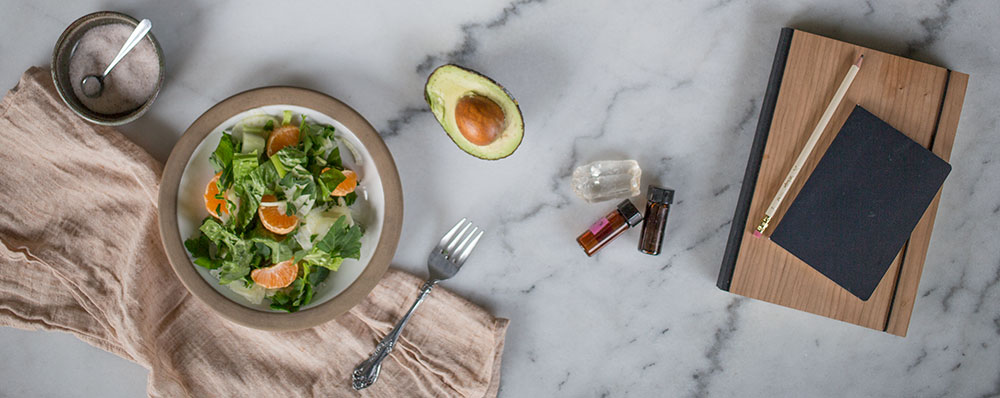
The lifestyle aspects of AIP: What and why?
The Autoimmune Protocol does not only consist of dietary changes, but also incorporates lifestyle changes as well. There are four areas of that should also be considered throughout all phases of AIP:
Through careful evaluation of the scientific literature these areas were pinpointed as having significant impacts on regulation of the immune system, hormonal balance, and/or the healing process itself. In addition, many of the AIP research studies used attention in these areas as a part of study protocols. Those with autoimmune disease are particularly vulnerable to imbalance in these areas and learning how to approach each can have as great an effect, if not greater, than dietary changes on restoring health and well-being. Emphasizing both diet and lifestyle is a powerful combination, improving the quality of life baseline for almost everyone.
The “how” of tackling each of these areas can feel pretty overwhelming, especially when attempting to implement the diet portion at the same time. Just like with diet, we recommend that most people start making changes slowly, instead of striving for perfection in every area all at once.
Can I combine AIP with my conventional medical treatment?
Absolutely! The medical research into the efficacy of AIP focused on patients combining a dietary and lifestyle approach with conventional medical treatment. It is important to note that autoimmune disease is often serious, and needing to combine medical care of any kind (whether that is surgical or pharmaceutical) with AIP is not failure. The goal should be living to each person’s highest standard of wellness with autoimmune disease, and often a thoughtful combination of conventional and natural treatments helps us achieve that! In addition, some may find that conventional treatments work much better after they have completed AIP.
Luckily, as the movement around this integrated approach to autoimmune disease that patients can put into practice themselves has grown, more and more doctors have started recommending it. Whether your doctor is supportive or not, be sure they know you are taking this big step, because AIP is powerful enough to impact future healthcare decisions and a collaborative relationship with your doctors includes sharing this important information with them. Read more at Where Medication Fits Into a Healing Diet.
Will AIP help my autoimmune disease?
There is no way to tell before you start making dietary or lifestyle changes how much they might help you. Results from the AIP medical studies are promising for specific conditions (like Crohn’s disease, ulcerative colitis, and Hashimoto’s thyroiditis), but our understanding of what to expect and specific time frames are mostly unknown. Anecdotally, we can tell you that most people start to see results in a few weeks, with most seeing the bulk of their progress around the 30-90 day mark before entering the reintroduction phase.
Here on the Autoimmune Wellness site we host a collection of individual accounts of healing through the Stories of Recovery Series and The Autoimmune Wellness Podcast. These features are from people with all kinds of different autoimmune diseases and residing all over the world. Ultimately, the “worst” side effect of AIP comes down to eating more nutritious food, so it might be worth it to give it a shot and see what benefits it brings for you!
Where can I learn more about the AIP medical studies?
Since 2015, Autoimmune Wellness has been instrumental in encouraging, fundraising for, and directly supporting multiple medical studies to test the efficacy of the Autoimmune Protocol in healing and managing various autoimmune diseases. In conjunction with medical research universities and research MDs, we are proud to say that the promising results of these studies are becoming more and more understood by conventional medical doctors. It is our hope that through research like this, we can bring the Autoimmune Protocol and other natural approaches to disease management into the mainstream conversation.
Direct links to the AIP medical studies:
- Efficacy of the Autoimmune Protocol for Inflammatory Bowel Diseases, Konijeti et al. 2017
- Efficacy of the Autoimmune Protocol Diet as Part of a Multi-Disciplinary, Supported Lifestyle Intervention for Hashimoto’s Thyroiditis, Abbott, Sadowski, and Alt 2019
- Clinical Course and Dietary Patterns Among Patients Incorporating the Autoimmune Protocol for Management of Inflammatory Bowel Diseases, Lee, Pedretti, and Konijeti 2019
- The Autoimmune Protocol Diet Modifies Intestinal RNA Expression in Inflammatory Bowel Disease, Chandrasekaran et al. 2019
- An Autoimmune Protocol Diet Improves Patient-Reported Quality of Life in Inflammatory Bowel Disease, Chandrasekaran et al. 2019
- Rheumatoid Arthritis and the Paleo Diet: A Qualitative Study
One Last Thing: Emotional Considerations
The process of changing diet and lifestyle to make health the number one priority comes with more than a few emotions to work through. Some people find themselves going through a grieving process, not only about their experience with autoimmune disease, but also now with the steps required to heal. The grieving process might include denial, anger, fear, and sadness. Others have challenges around social adjustments and sometimes in the same way relationships can be strained by chronic illness, they can be strained by such an intensive healing protocol. Some might find there is a lot of struggle around letting go of certain foods, while others might realize they’ve fallen into a need for flawlessness around food. (If you think your patterns are leaning toward disordered eating, it’s important to get the right kind of help so that you can use AIP as it was intended and not allow it to just become another burden on your heart and mind.)
You’ll find many articles about navigating the emotional side of AIP throughout the Autoimmune Wellness website, but here are some of our favorites:
- Life Is Happening NOW (And Why It Matters In Autoimmune Disease)
- From Victim to Empowered – Create Your Life With Autoimmune Disease
- Remember… You Are More Than A Diagnosis
- Change the Channel, Change Your Life
- Six Ways to Mentally Prep for AIP
Professional Support
If you are still feeling overwhelmed and feel like professional support might be helpful, we are one step ahead of you! Nearly 1,000 healthcare providers have been trained in implementing the Autoimmune Protocol according to current evidence, including how to customize and personalize depending on each person’s unique needs.
The AIP Certified Coach practitioner community contains both non-licensed and licensed providers from across the natural and conventional spectrum of healthcare, located all over the world, and working in many different languages. You can find health coaches, nutritionists, fitness professionals, bodyworkers, herbalists, naturopaths, medical doctors, and more. Search listings to find a practitioner near you at the AIP Certified Coach Practitioner Directory.
Looking for more AIP resources?
If you are looking for hard-copy resources for the Autoimmune Protocol, we’ve got you covered.
Our co-authored guide, The Autoimmune Wellness Handbook serves as an all-angles approach to every area those with chronic illness want to cover, from the Autoimmune Protocol to sleep, stress management, and connection (and it also contains a library of AIP recipes!). The Autoimmune Paleo Cookbook was the very first AIP cookbook and still a favorite in the AIP community. The Alternative Autoimmune Cookbook was the first to tackle the emotional side of healing along with delicious reintroduction recipes. And The Nutrient-Dense Kitchen contains an impressive library of AIP favorites with an extra focus on accessibility, quick meals, and nutrient-density.
We’ll be the first to tell you that you don’t need to buy any books to get connected to all the information you need to embark on AIP, because our mission here at Autoimmune Wellness is to share that information for free. There are over 100 articles on this site covering every detail of AIP, in addition to over 250 compliant recipes and even more resources and links on our resources page. You can also tune in to past episodes of The Autoimmune Wellness Podcast for an audio version of the information presented here.

Downloadable resources
If you are looking to get started with AIP, you will want to sign up to get the AIP Quick Start Guide. Just pop your email in the box below and we will send you the following resources over the course of a week:
- Complete, printable lists of the foods to avoid and include during AIP
- A 2-week AIP meal plan and shopping list
- A 90-minute batch cooking video from Mickey
- Printable guides on food reintroductions and reactions
You will then be subscribed to our occasional newsletter, where we deliver free, exclusive content in the form of tips, articles, recipes, news, and more. By signing up, you will be the first to know about what is happening in the autoimmune community!




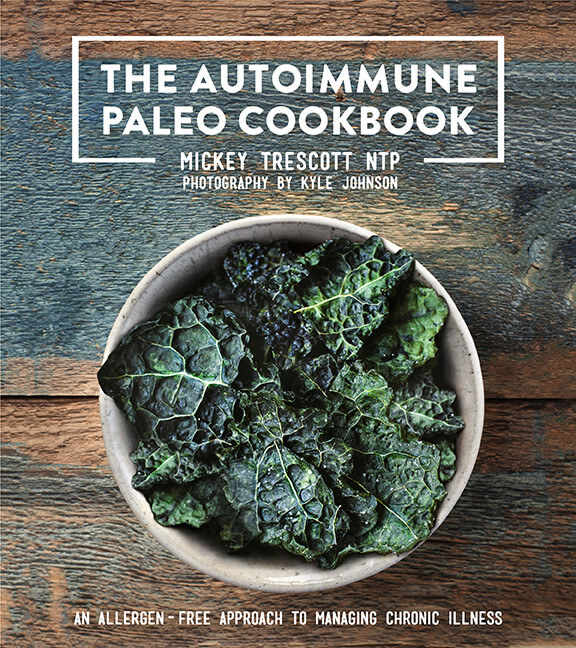
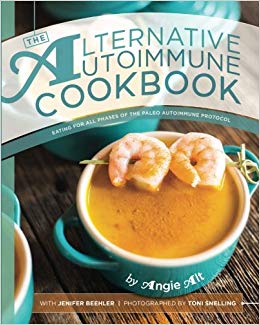
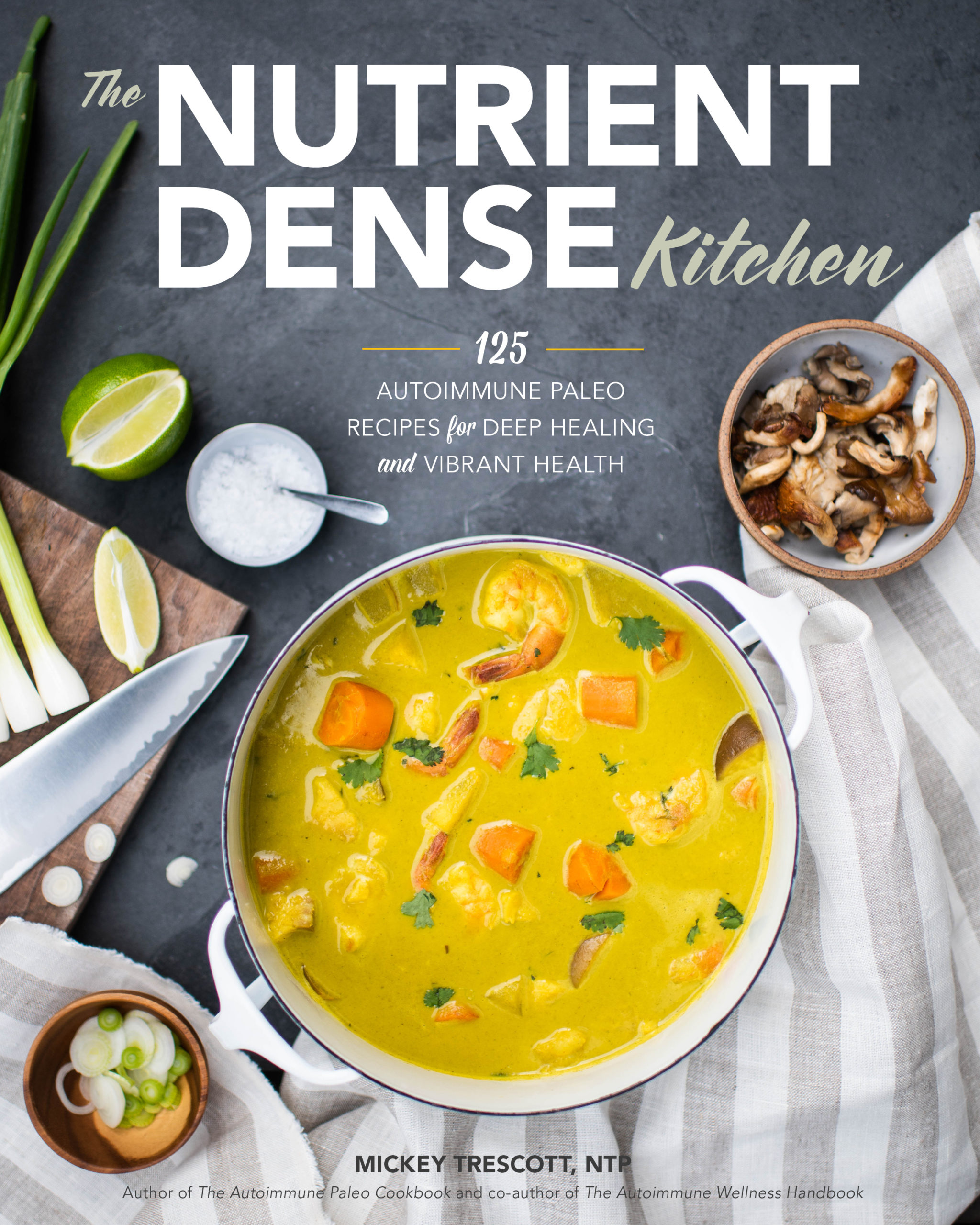
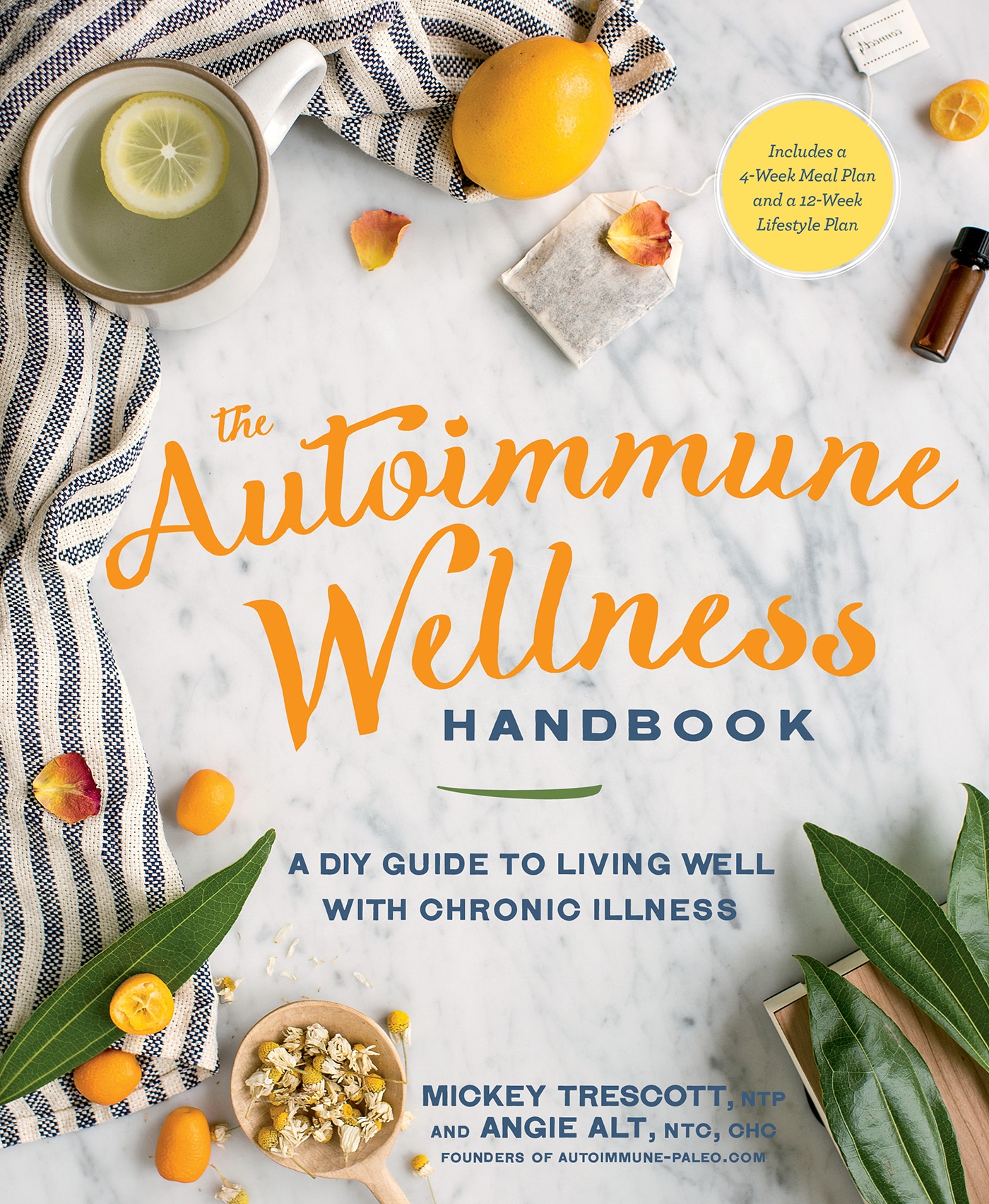

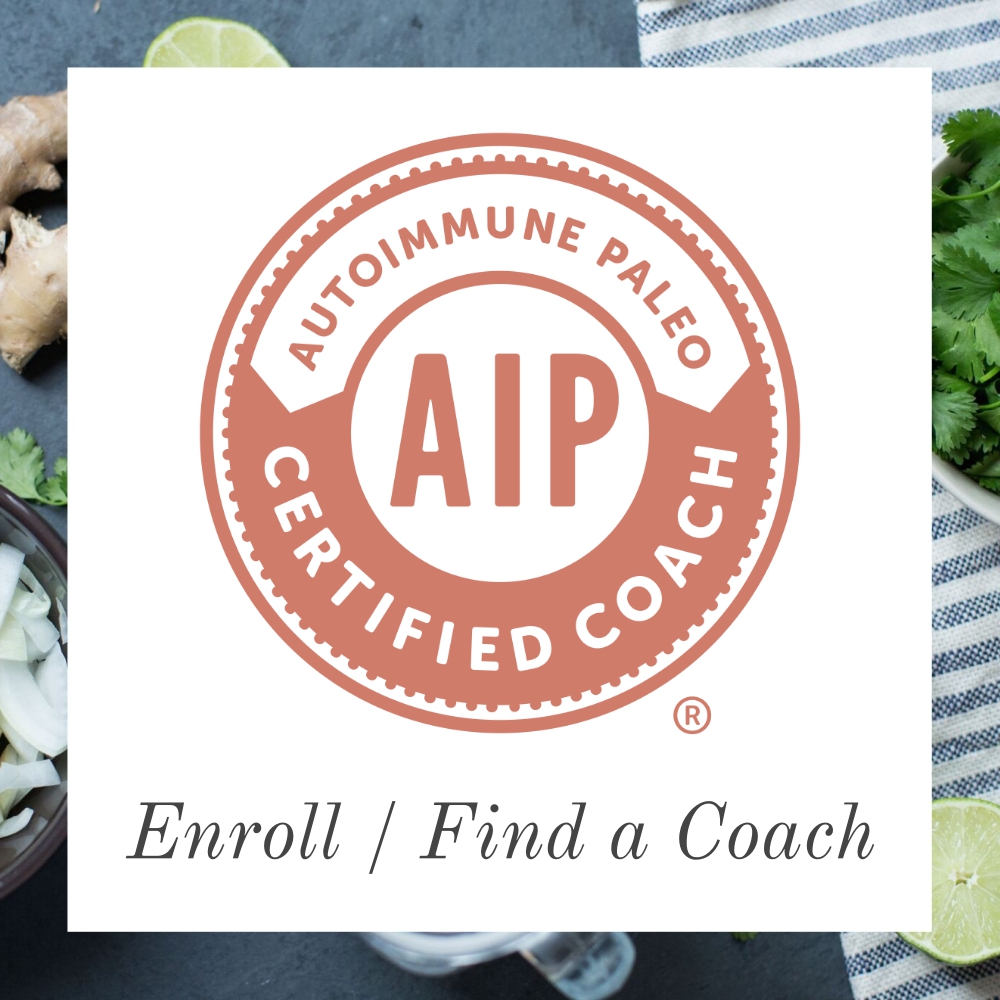
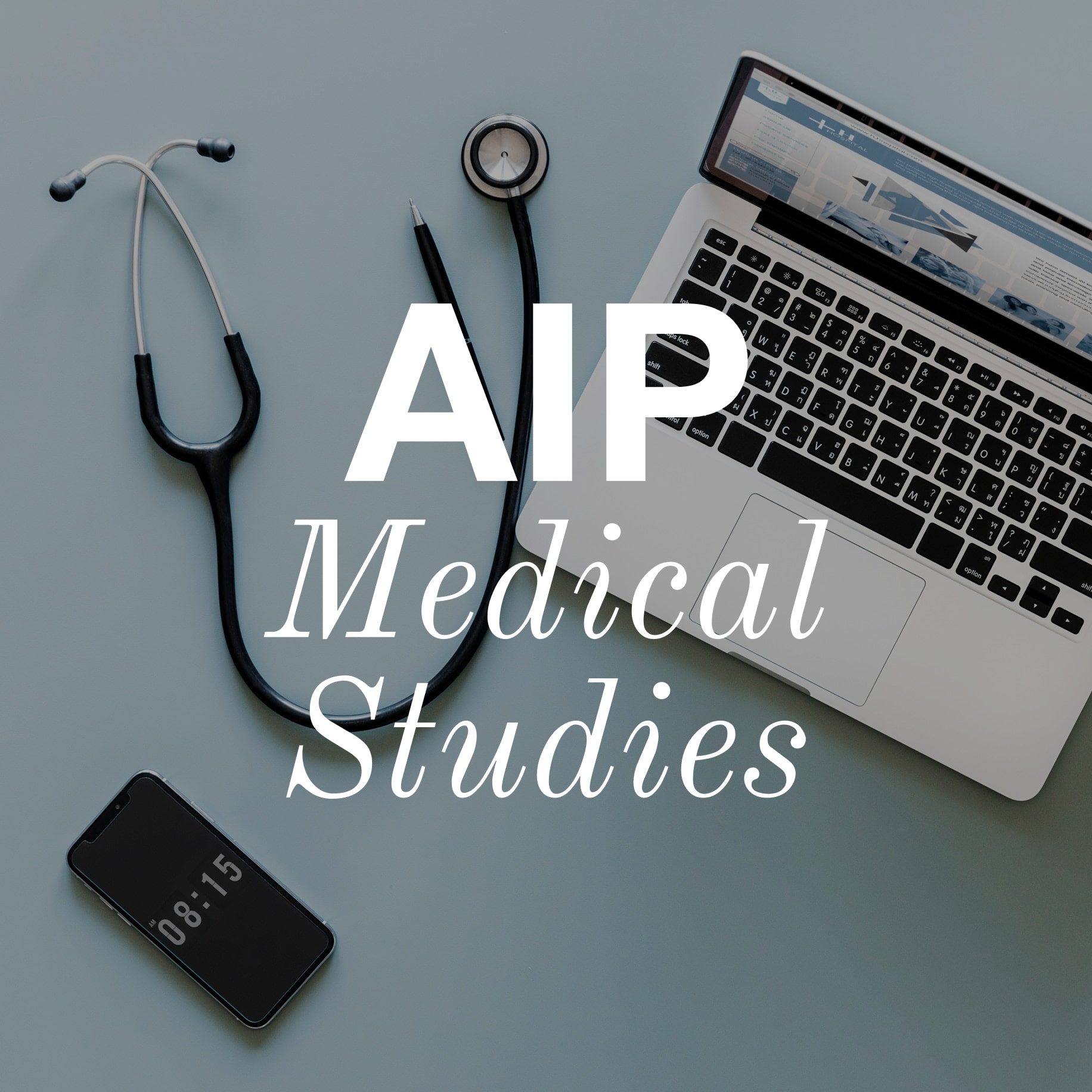
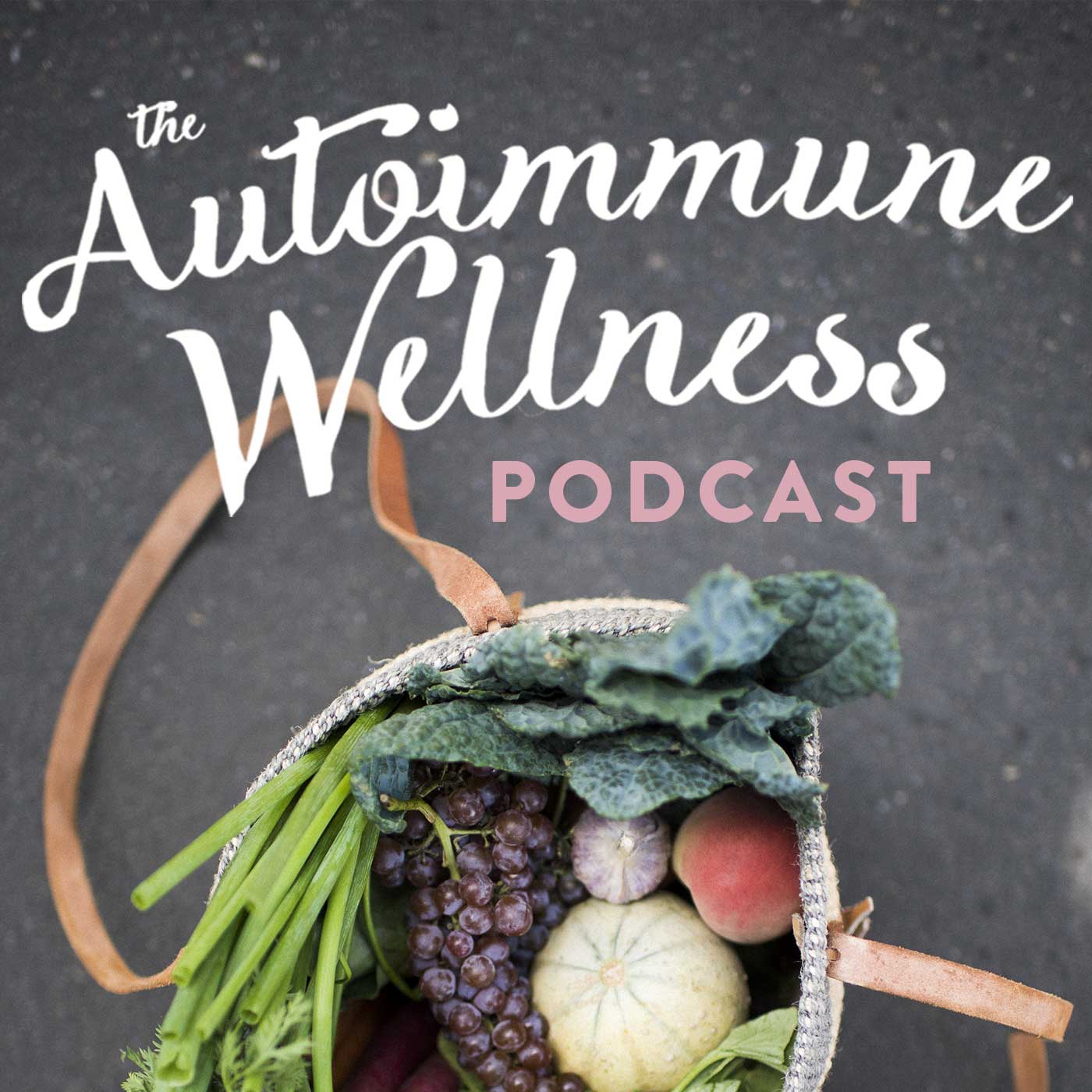

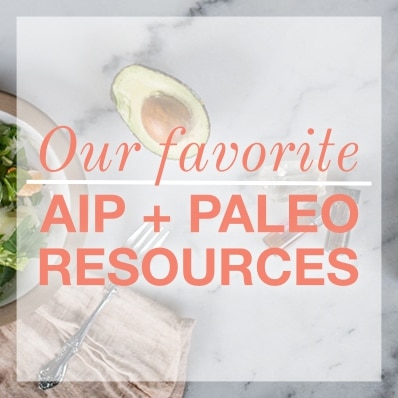
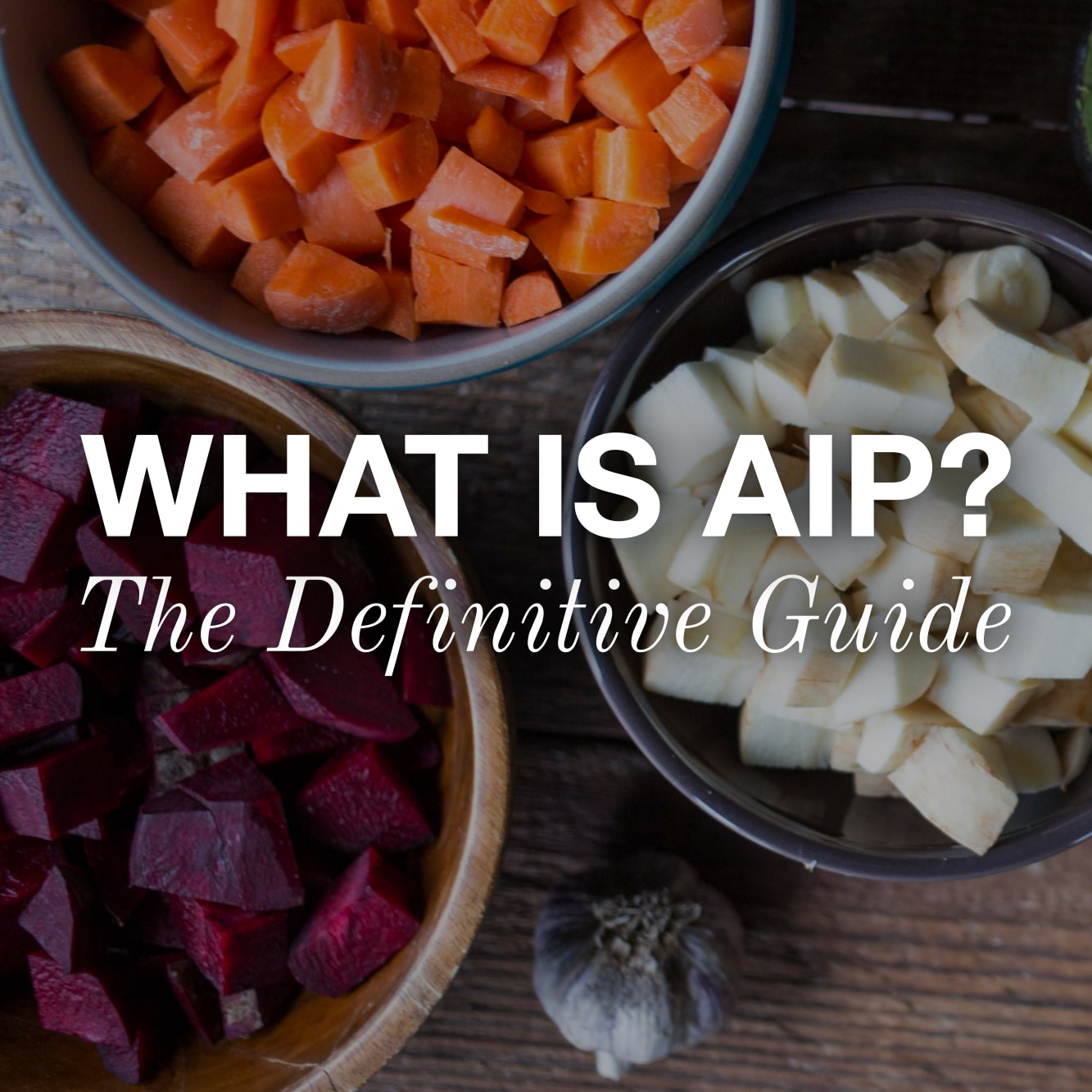
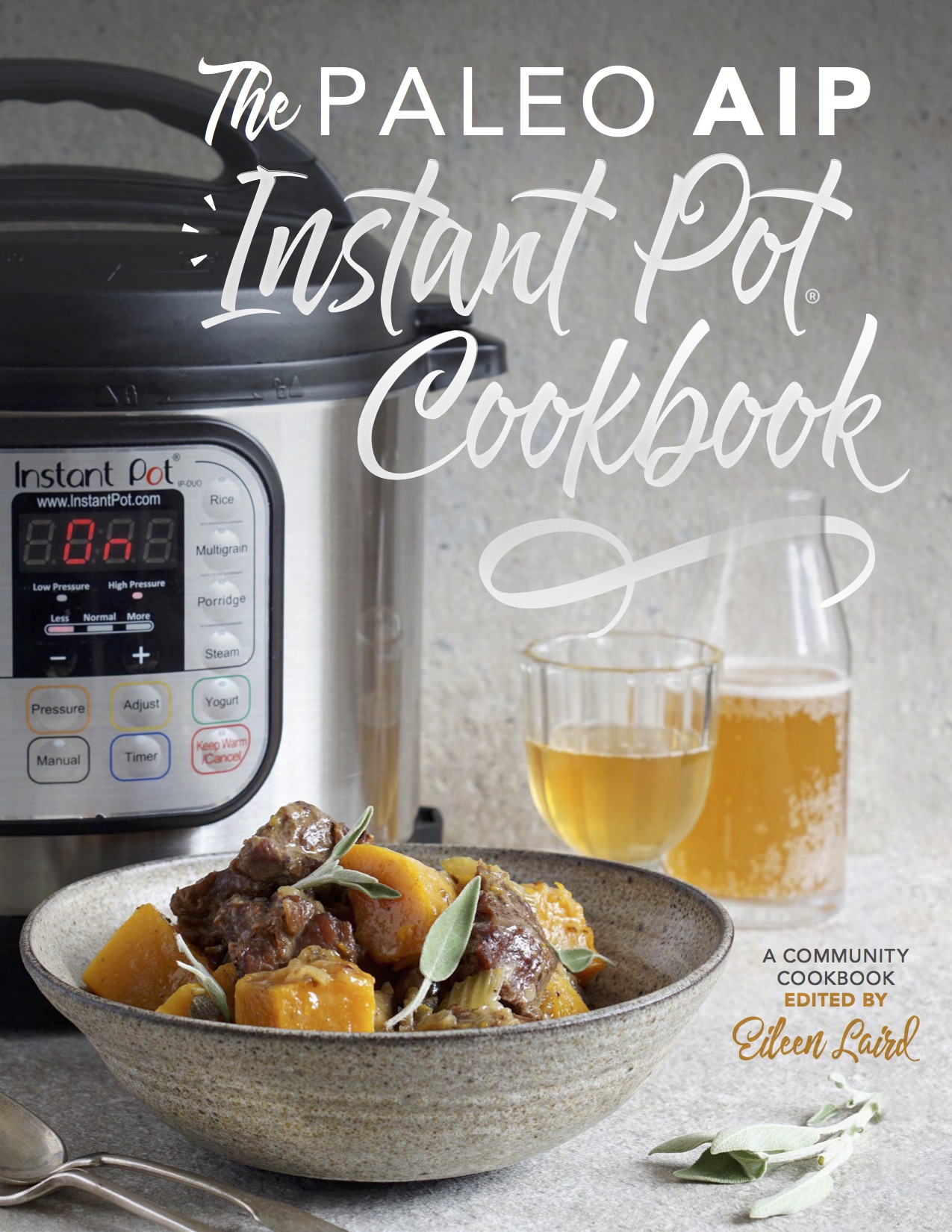
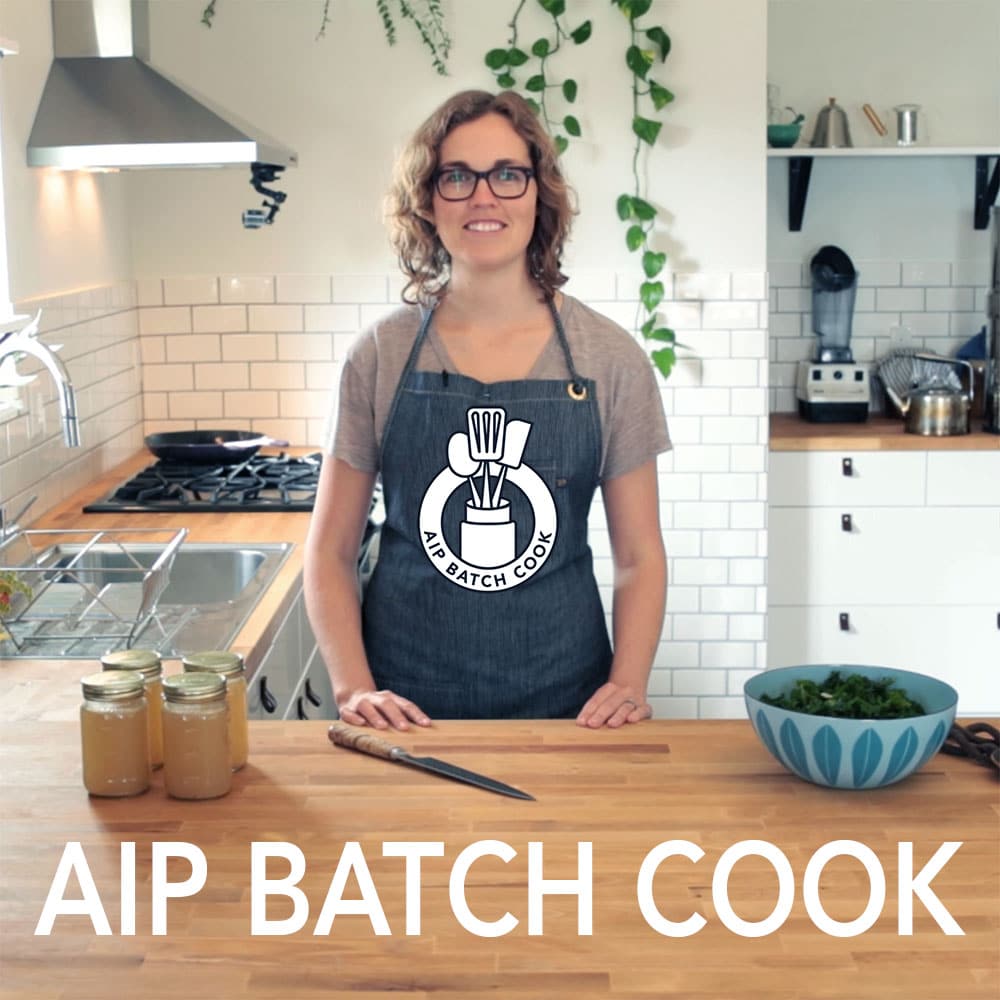
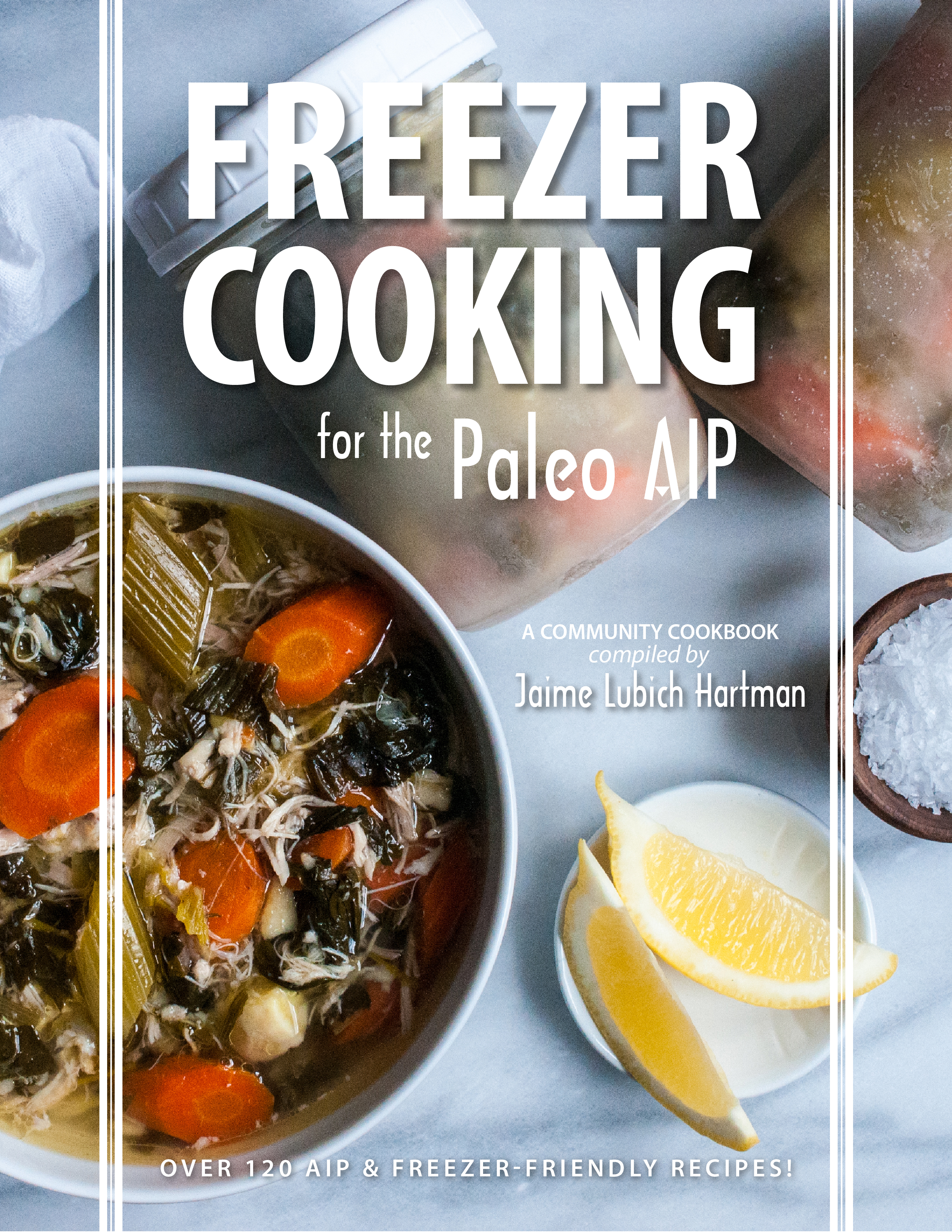
153 comments
Thank you for writing this! This will be such a great resource both for people with autoimmune conditions and for them to share with family and friends who don’t understand why they are making this diet and lifestyle change. I know I’ll be sharing it with all of my clients!
You are so welcome Jaime! Thanks for the love!
I would like to see someone do a casual survey, a site like yours would be the perfect place to start. Just to cover some of the basics, say like how many amalgam fillings are in your mouth, was your mom born premature, what would you say the amount of your petrochemical or heavy metal exposure, 1-10, have you been exposed to massive amounts of microwaves, or just a bit, do you live near large power lines or under the shadow of a TV tower, are trees dying in your neighborhood or adjacent to your home, how many tics do you pull in a month, you know just regular stuff. For those of us that can’t quite swing the pendulum, being able to see percentages of success stories from different causes might be an eye opener. Thanks
Bruce, that would be interesting, but generally as you get into more specific issues that you are asking folks the higher the need for oversight & ethical review of the data you are collecting + really secure storage of all that data. Maybe one day the right things will be in place for someone in our community to take up that work!
Thank You Angie for consolidating the question and the process. Will serve as an excellent resource to my clients, family and friends. I hope you know how appreciated you are:)
Aaaaw! Thanks Kim! I’m glad it will be so helpful.
Fighting cancer and food sensitivities I do know I feel so much better without gluten but am unsure about beans I Also ache when I eat the nightshade vegetables
You could always try AIP & see if it helps Wendy!
This was incredibly helpful! Thank you for the straight-forward and informative article.
You are so welcome Elisabeth! Glad it made things easier.
This is an awesome post and I really love it! I’ve been AIP since February and it has been a journey. One request because I can’t seem to find the help anywhere – more resources for people who “fall off the wagon” so to speak. I’ve read the “AIP is not a religion” article, which is great. But there doesn’t seem to be much info for those of us who have “broken the rules” and are trying to get back on the horse. How do we deal with the feeling of failure? How do we assess how much healing occurred before and how much potential damage was done by “cheating”? How much longer do we need to do the elimination phase if we didn’t reintroduce properly? That sort of stuff. Many of the community resources I’ve found tend to point fingers and create a feeling of shame. It would be great to hear from you, Mickey, or even Sarah on how to bounce back WITHOUT feeling like a failure.
Jordan, you must be a mind reader. I am planning a post about this to come out in a few months. Until then, in general, I’d encourage you to get some great support around you. A very supportive & super judgement free zone where we troubleshoot this issue together a lot is my group program: http://www.sadtoaip.com We would love to have you!
I could easily make these words mine, Jordan. I was coached in Paleo 8 years ago with a lot of success but have been off the wagon for a long time. I like to eat clean but with a hub who is not on board, success is hard. Now I feel is a good time to start up again and this time to go beyond paleo. I wonder if it’s possible I could cure Hashimotos. I’m hoping to find support and strength to eat the way I want to eat and feel satisfied.
I was introduced to you all from my local Paleo bakery/restaurant. I’d never heard of AIP and the elimination diet or you all :-). I’ve listened to ALL of your podcasts in just under 6 weeks, I’m on chapter 3 of your book and now this great resource! Thank you all for your transparency, diligence and willingness to help others. You are truly making a difference in lives.
You are so welcome Becky!! I’m so glad our work is helping you!
[…] little about AIP: AIP is a diet and lifestyle guide for people trying to heal from autoimmune diseases. It’s kind of a spin-off of the paleo […]
Would you please send a list of the foods to eliminate and the list of foods one can eat when first beginning the AIP diet?
Thank you,
Annette
Annette, you can sign up to receive a free list via email by clicking on the link at the end of the post. Thanks for reading!
Hi Annette,
You can get the list by signing up for our newsletter at the bottom of this page!
I’ve been reading about AIP for a month, and this is the most clear and straightforward description I’ve seen! Thank you so much for putting this all together with links and all. Autoimmunity is scary and hard – and your work is making a big difference for those who want to address its causes directly.
Dana, we definitely saw the same need for a post of this kind. We are so glad it helped you!
I’m so very glad to have found your website! Thanks for all the incredible work. I will be trying AIP. Interestingly in the last 18 months i have found I have “needed” to drop many foods listed as not to eat… having done SCD, medical ketogenic diet ( dairy free!! Yikes) combined with food intolerance issues ( yep.. nightshades are a killer) with my son, l “ know” a lot.. and yet… what do you do when the primary problem is a decade of damaged sleep? ( rhetorical ?) … thats how I’ve ended up on your website… trying to avoid the slide into AI.Being stressed and having poor sleep really are a profoundly important part of being and becoming unwell. Big thanks, as i see i will get a lot of support here
You are so welcome MaryAnne!! We are wishing you lots of wellness as you start the journey.
I tripped onto your website when a friend shared one of your recipes for me. We are following an AIP diet, and I’ve done a fair bit of reading about AIP approach to reversing autoimmunity. Your website really is one of the best I’ve come across in explaining the diet so that it’s not an open-ended or bouncing in and out of it to different degrees approach. Thank you for such a clear, thoroughly well explained, and concise explanation — and the absence of sales pressure to “buy my supplements!” that seems to be on a number of other sites.
No problem Barbara! I’m glad it was helpful!
[…] Autoimmune Wellness have a great guide on their website where they summarize AIP all on one page: What is AIP? The Definite Guide). So, I have become a big fan of sea salt, basil, and oregano. Tasty and easy – that’s […]
Hello. I am wondering if salt is allowed on this diet. Thank you
Hi Naima, yes salt is fine in the elimination phase.
I have been following strict AIP for some time now and have found amazing results.
That being said, there is one thing that I am having a difficult time with in reconciling- why are nuts and seeds like the cashew which are part of a fruit avoided while there are many other fruits that are permitted but contain seeds that are eaten with the flesh of the fruit. For example: zucchini, blackberries, strawberries, ect. all contain seeds that are eaten and these foods are permitted.
Also it is my understanding that black peppercorns are not permitted based on the logic that the seed is ground up with the flesh of the berry when making the pepper that is commonly eaten. So wouldn’t this also call for not wanting to eat fruits that do not have avoidable seeds as well?
Would it be useful to try and eliminate these as well for a time and see how your body reacts? I am curious to hear your thoughts on the matter.
Wayne, those are good questions. I think you’ll find some of the in-depth explanations as to how Sarah Ballantyne evaluated these foods & gave them the “in or out” vote during the elimination phase useful. This post is a great guide on that: https://autoimmunewellness.com/whats-in-whats-out-on-aip-answers-to-tricky-foods/
Wanting the full food list please.
Hi Spring! All you need to do is sign up for our newsletter and we’ll deliver printables to your inbox. Signup is at the bottom of every page on the site.
thanks, looking forward to the printable and the news letter
Thanks for signing up Kelly!
I am interested in a printable list
🙂
Hi Annette! All you need to do is sign up for the newsletter at the bottom of this page, and we’ll send it to you in the next hour 🙂
THank you for writing this! I am very excited to try this – your guides are going to be a huge help and I can’t wait to learn more. I have celiac – and just started having lichen s symtopms – do you find it hard to find certified GF products….like if there is a dijon mustard that is Paleo certified, organic etc do you find a certified Gluten free version? Being a celiac this diet should be easier…but I see some needs for certified GF coconut flour etc. Thank you in advance SO very much!
Hi Brittany! I find that since I eat mostly food that is cooked from whole-food ingredients (like vegetables, meats, etc.) I don’t have an issue with finding gluten free products. For the items I do use that come from a facility that might have cross-contamination (like alternative flours), I do check to make sure the product was manufactured on dedicated equipment. Hope it helps!
Looking to get started on the elimination phase.
Hi Ruth! You’ve come to the right place. Sign up at the bottom of this page to get our quickstart guide emailed right to you. Good luck!
I would like a list of the foods that are taboo in the first phase of the AIB diet. Better yet, could you send me a list of the foods that are allowed in the first phase, this may be a bit easier to digest (no pun intended)?
:O)
Thank you
Hi Tifanie! Scroll to the bottom of this article & you’ll see a teal colored box w/ a newsletter sign-up. If you sign-up, you’ll automatically be sent a series of email, including the food lists you are looking for.
[…] What is AIP? The Definitive Guide (Autoimmune Wellness) […]
[…] What is AIP? The Definitive Guide […]
I’d like the list of AIP foods please and any other pertinent info for starting. Thanks.
Anna-
Scroll to the bottom of the post & you can sign up for the guides to be automatically delivered to you via email.
I would like a printable list of foods not allowed – Thank you
CW – all ya gotta do is sign up for our newsletter up above, and we’ll email it to you!
I would like to have all the guides sent to me.
Thank You
Hi Sue! Just pop your email in the box above and we’ll send them to you.
I would like the printable foods list. TIA
Hi Yvonne! You need to sign up for our email list up above.
Please send me a list of foods to eliminate on the AIP. Thanks
Hi Jean! You need to sign up for our newsletter at the bottom of this post, or any page on the site, and we’ll email it to you. Good luck!
Hi, I have just been diagnosed with scleroderma and am very interest in starting the elimination phase. It would be almost more helpful to see a list of foods that I can eat. Do you have such a list and may I have it?
Thank you!!!
Gretchen
Hi Gretchen! Scroll down to the bottom of the page to opt-in to our newsletter, we’ll send you a printable list as a part of our quick-start guide!
HELP HELP HELP! I am a health professional and well versed in nutrition. So I get the diet and all the things…. We have been “paleo” for 10 years. This is GREAT INFO here ladies. Well done! BUT….
Myself and my 4 and 6 year old girls have mold illness…so we have to follow a mold diet. AND I also have Lyme and so its suggested to go AIP. AND now we are dealing with histamine intolerance and so bone broth and fermented foods, a lot of fruits, some veggies, shellfish and even avocados are OUT for a while…. Ahhhh
I am EXHAUSTED yall. I need a SIMPLE way to feed my family. I have searched for Low Histamine meal plans and they are loaded w grains and other non-AIP items.
Maybe I just need to stick with basic grilled meats and steamed veggies and stop trying to use meal plans all together. #tiredmama
Hi Kelly! So sorry to hear about what you all are struggling w/, but I think you hit the nail on the head here . . . give yourself permission to keep it really simple as you work on a complex healing process.
Thank you for sharing all of this information. I have Hashimoto’s, Ankylosing Spondylitis, hypothyroidism, just had parathyroidectomy (to remove a tumor), am prediabetic, had a hysterectomy last year, am in menopause and feel tired and achy all the time. I have been following Hailey Pomroy’s Fast Metabolism Diet for several years but have found that with all these new autoimmune diseases and menopause, I am gaining weight again (10 kg in a year) and have no energy. I am hoping that the AIP diet will help! I am interested in receiving your list of foods to eat and any meal plan suggestions. I teach preschool and my mind and body are zapped by the end of each day! Thanks for your help!
Hi Karen! Sorry to hear of your troubles, but happy you found us here. If you sign up for the quick start guide, either up above in the post or below in the website footer, we’ll email you all of the materials. Wishing you the best on your journey!
[…] now I’d heard of the Autoimmune Protocol through Mickey Trescott at Autoimmune Wellness. And I thought to myself, wow, that sounds impossible! I’m so glad I don’t need to do […]
[…] If you want to find out more, this is a great article about AIP and elimination diet. […]
[…] To learn more about the protocol I use, read about the autoimmune protocol here. […]
Interested….
[…] and then re-branded to autoimmunewellness.com. They had a really easy way of explaining how to start AIP including 2 print outs that I still refer to, to this day of foods to eat and foods to avoid. From […]
Trying to understand autoimmune prorecol
I live in West Africa, while I can relate to most of foods on the list, there are mnay local foods here that are not list and I do not know how to classify them; e.g. yam, cocoyam, ripe and unripe plantain, breadfruit seeds, and a few others
Hi Chidi! I used to live in Guinea & Sierra Leone. I know a lot about the local foods. Yam, cocoyam, both ripe & unripe plantains, & breadfruit are perfectly okay during the elimination phase of AIP. If you can let us know about the other foods you are curious about, I can try to help. So glad to have you in our community!
I have signed up for the news letter and received some information. But I still have not received the print out food list.
Hi Lisa! Sorry to hear that didn’t make it into your inbox. If you go to the bottom of our newsletter, hit unsubscribe, and then subscribe again at the bottom of any page on our website, it will re-trigger the welcome sequence so you can get your list!
[…] plethora of detailed articles on her blog: The Paleo Mom. If you want a more summarized resource, The Autoimmune Wellness website is a wise place to start… as well as their book: The Autoimmune Wellness Handbook, which I did a […]
I get your informative newsletters, but would LOVE the printable Food List….
I’m not seeing where it is, or how to “find” it….
Help!
Thanks!
Hi Lisa! All you need to do is go to the bottom of one of our emails, click unsubscribe, and then come back over here to the site and sign up for the newsletter again. This will trigger the welcome sequence again and the food lists will be emailed to you within an hour. Hope it helps!
So you don’t have any fruits listed. Are all fruits OK? I learned that during elimination, only berries should be eaten. Please help me clear that up. Thanks a bunch. I love your page. I recommend it to everyone. Even those who don’t have an autoimmune disease. It’s just good, clean, healthy suggestions for eating for wellness. Thank you so much!
Hi Sheri, fruits are included in the elimination phase as long as they are not nightshades (like ground cherries). Good luck!
Hi,
The AIP diet sounds similar to the GAPS diet, but I have a fundamental issue with both. They are very low carb. I have adrenal fatigue, and low carb diets are a no-no for me (or for anyway with hormonal issues, from what I understand). In fact, it was a low carb diet that was a factor in my adrenal fatigue to begin with. So I seem to be hamstrung. My gut most likely needs healing (since I have autoimmune tendencies and adrenal fatigue), but the healthy performance of my hormones (primarily insulin and adrenalin/cortisol) seems to depend on my carbohydrate consumption. (Too many carbs leads to an insulin spike, too few to cortisol and/or adrenalin.)
Any suggestions?
Thank you!
Katherine, AIP is not meant to be a low carb approach. It is low in processed carbohydrates or grain forms of carbs, but there is lots of encouragement to eat plenty of the dense carb veggies, like sweet potato, yuca, etc.
[…] To learn more about AIP, see this blog post, What is AIP? The Definitive Guide. […]
I found all this info very interesting and would be interested in your six week course to transition to sip but since I missed the may course when will the next one be? Just wondering if I want to wait for it or find another approach
Heidi, enrollment for the July cycle is open now. You can enroll at sadtoaip.com.
I have been whole food, plant based, no added oil for the last 4 yr. This year I was diagnosed with Sjogrens & Rheumatoid Arthritis. I want to try the AIP plan but animal protein sits like a rock in the middle of my chest & is painful to go down. On WFPB I don’t have any heartburn or reflux. I’m afraid to eat all the meat required with AIP Paleo. Can’t I do this & stll be vegan?
Hi Linda! We do not recommend doing AIP without eating at least fish and shellfish to meet protein and nutrient needs. The protocol is dangerous otherwise. When I was transitioning from vegan to AIP, I found that my digestion was the biggest barrier to being able to tolerate meat. My practitioner had me use digestive support, especially acid support, and I found that I was able to digest meat no problem. The issue is that meat has nutrients our bodies need to produce the acids we need to properly digest it, so it is a vicious cycle that can be difficult to disrupt. You can learn more here: https://autoimmunewellness.com/low-stomach-acid-and-autoimmune-disease/
I subscribed to the newsletter but have not received anything at all that was listed – eg. printable food list ,batch cooking e-book etc.
Please advise how to get this?
thanks
Hi Jo! The newsletters may be going to your junk or spam folders. I would add [email protected] to your contacts and try again.
I am currently in the elimination phase of AIP. In general, I love the food, although I am not ready to get into organ meats yet. I haven’t found a lot of information about skin care products. So many lotions, sunscreens and shampoos have seed oils. Is this something to be worried about? I haven’t found much about that online. Also, as I have a lot of musculo-skeletal issues, I take a lot of curcumin supplements, but they all seem to have piperidine in them, which is derived from black pepper. As I understand it, the reason we exclude seed products is for the high amount of omega-six oils in them. Is this a concern with piperidine also? Please share your thoughts on these issues.
Hi Mary Sue-
You don’t necessarily need to avoid seed oils in skincare products, unless you notice they cause rashes or other sensitivity reactions for you. We are more concerned w/ the effects of consuming seeds early in the healing process. As to the curcumin, if it is working for you & recommended by your healthcare providers, it may be that the potential benefits outweigh the negatives. Sometimes on AIP we need to make decisions like that, as it a template that can be adjusted to your individual needs.
Is Carob allowed?
and are alfalfa or sunflower sprouts allowed?
Cherice-
Take a look at the Beans, Peas, and Other Foods from the Legume Family section of the article for your answers. The alfalfa & sunflower sprouts would be in the same category as bean or pea sprouts.
I have recently been introduced to your site through “Whole 30”. Not long after completing a “Whole 30” cleanse last year and feeling great, I lost over 50% of my hair and was diagnosed with Alopecia Areata. October always inspires me to reset my diet, but I hesitate to try “Whole 30” again due to the proximity to the onset of my AI. I can’t help thinking of all those eggs and nuts I ate! I wonder if this program has been successful for those in the Alopecia Areata community.
Jessica, it has been! Here’s one story: https://autoimmunewellness.com/aip-stories-of-recovery-july-2016/
[…] The AIP diet at Autoimmune Wellness. […]
Are you aware of any success the AIP diet has had with people who struggle with Alopecia? There are literally thousands of topical treatment suggestions, but I believe that the body needs to heal from the inside-out. Thoughts on this topic would be greatly appreciated. Thank you!
Anne-
There are lots of successes w/ alopecia. You can read one here: https://autoimmunewellness.com/aip-stories-of-recovery-july-2016/
[…] your diet can be a powerful tool in addressing your autoimmunity. I recommend starting with the Autoimmune Protocol (AIP) Diet to get a strong handle on your autoimmunity symptoms and reduce overall inflammation. However, if […]
New to the site. I am trying to locate the list of foods that need to be avoided.
Can you help me locate this?
Thanks!
Amy
Hi Amy! If you pop your email in the newsletter signup at the bottom of the page, you’ll get the .pdfs emailed to you in our welcome series!
Gracias por compartir! Recientemente recibí diagnóstico de lupus así que estoy muy entusiasmada por iniciar con este plan.
Hiya, I am a long time follower. So happy to see how you and the community and company have grown. It makes me so happy that the autoimmune community is more understood and getting the recognition needed to help all the sufferers out there. I am always telling people to look up AIP. I must admit I have fallen off the wagon a few times, but I never fully let go. As you know, being a mom with multiple disorders can put us at the mercy of others sometimes. I know they are helping, but they just don’t understand the real reason why I am so picky with my food. So, now that I am able to get around again I would like a resend of the lists please. I have had them up in my kitchen since 2013. Many notes added to them, they are looking haggard. It is time for a restart. Many blessings. Thank you for sharing with us, I know my life and body benefited from AIP.
Hi Kristy! Thanks so much for being with us. You can get the lists again by unsubscribing and resubscribing to our email newsletter, or by subscribing with a different email address. The link to do so will be at the bottom of a recent newsletter, or you can use the opt-in form at the bottom of any page on the site.
[…] Here is a link to a topline description. https://autoimmunewellness.com/what-is-aip-the-definitive-guide/ […]
[…] Nutrients are a part of your HRT Plan. I am an expert on getting more nutrients from each bite of food. The foods with most nutrients are described in The Autoimmune Protocol Diet. This diet is anti-inflammatory and nutrient dense! This keeps your immune system running strong! This diet gives you 7-10 times the nutrients compared to a processed food diet. Here is a link to a topline description. https://autoimmunewellness.com/what-is-aip-the-definitive-guide/ […]
Having Hashimoto’s, I was told to keep iodine out of my diet, but all the AIPs I see suggest fish and other seafood, which has Iodine. I’m guessing I should keep these out of my diet? Any advice for AIP with Hashimoto’s?
Hi Drew! Generally speaking, seafood doesn’t have so much iodine that it is a concern for those with Hashimoto’s (which I have as well!). Personally I only avoid the seafoods with extremely high iodine content, like seaweed. Most fish and shellfish don’t cause a problem for me. Good luck!
Tremendo articulo, muy interesante. Por favor me pueden enviar la guía en pdf.
Saludos,
Amazing amount of info. I look forward to starting but I can’t find the two week plan that was advertised! What am I missing or not reading? Please help point me in the right direction. Thank you
Hi Louise! You need to sign up for our newsletter and it will be sent to your email address. If you use gmail, it is usually to be found in your “promotions” folder.
I just tested positive for autoimmune. I am looking to rid the joint pain and other symptoms thru diet as well and happened upon your site – but I’m pretty darn sure I’m not willing to compromise my vegan lifestyle for ethical reasons. Can you create a plan that is vegan? Sure we can leave out soy or certain nuts, but bone broth and steak – grass fed or not – it’s still cruel. I’m sure the research is out there, just wondering if you’ve got your hands on it yet or do I have to do it?
Hi Stephanie,
I’m sorry to hear about your autoimmune diagnosis. I understand wanting to maintain veganism, but I must stress that it is not possible to safely implement AIP as a vegan or vegetarian. My suggestion is to find a coach who can help design a nutritionally-safe elimination plan for you. I’m sorry I don’t have a specific recommendation. Cronometer can be a good resource to make sure your meals meet nutrient requirements. Good luck.
Hi, I was just diagnosed with Ankylosing Spondylitis. I also have a salicylite sensitivity. I am trying to combine the following diets and figure out a food list that is safe for me.
-aip diet
-diary free
-glueten free
-salicylite free
I am wondering if this is something you can help with or refer me to someone?
Thank You
Paige
Hi Paige! Your best bet would be to hire an AIP Certified Coach to put together a personalized plan for you. You can find a worldwide listing here: https://aipcertified.com/coach-directory/
[…] _____________________ Nutrients are a part of your HRT Plan. I am an expert on getting more nutrients from each bite of food. The foods with most nutrients are described in The Autoimmune Protocol Diet. This diet is anti-inflammatory and nutrient dense! This keeps your immune system running strong! This diet gives you 7-10 times the nutrients compared to a processed food diet. Here is a link to a topline description. https://autoimmunewellness.com/what-is-aip-the-definitive-guide/ […]
Please send me the list of avoid foods for inflammation.
Thank you
Hi Jennifer! You’ll find the newsletter signup at the bottom of every page, once you opt-in we’ll send you the food lists and meal plan.
Signing up to received the food lists, etc.
Thank you!
Hi, I’ almost ready to start my elimination period. When you refer to stevia as a non nutritive sweetener, you mean the processed white powder or liquid extract, right? Would using green leaf organic stevia leaves in teas be okay?
Hi Julie! Unfortunately, we recommend removing all forms of stevia during the elimination phase.
I’ve see multiple sources make some version of your statement “staying in the elimination phase for longer than necessary can be problematic and cause harm long-term” but there’s never more information. Can you elaborate?
Hi Amy! This article should answer your questions: https://autoimmunewellness.com/personalized-aip/
Modified AIP – this is fantastic! For many years, I felt kind of guilty that I never made it to restricting my diet to the core AIP, yet I felt so much better without going that far. I ended up with a diet that was almost identical to the modified AIP – so I guess I was onto something back then! Very happy to see the modified AIP diet spelled out. Hopefully, even more people can benefit from a less restrictive AIP diet to improve their health.
Hi Tasha, thanks for sharing your experience! Success without going for the full elimination isn’t all that uncommon.
Oh wow, I’ve been doing core AIP since March due to a Hashimoto’s diagnosis and have slowly reintroducing things (so far black pepper, mustard, 1 cup of coffee daily and cocoa/chocolate appear to be ok, ghee remains to be confirmed). I was wondering whether the food items that are not eliminated during modified AIP (especially rice and psedo-grains) will now be allowed as 1st phase reintros? I’d be so happy to try rice and buckwheat again…
Thank you for all your hard work and all the info you have shared!
Hi Ilse! The reintroduction stages for Core AIP has not changed. The foods included in Modified AIP are still reintroduced in the usual schedule. You can see those stages here: https://autoimmunewellness.com/how-to-reintroduce-food-on-aip-the-definitive-guide/
This is such an incredible resource. Thank you so much for sharing it. It’s currently changing my life. 🙂
Julia,
I’m so happy to hear that! Best of luck to you!
Thank you for all the information. I am newly diagnosed with Hashimotos and have been battling many of the typical symptoms for years. AIP will now be my first step. Wish me luck 🙂
You got this!
Just reading the new modifications. Why did Peanuts move from Legumes to Nuts and Peanuts? Peanuts are still Legumes.
Hi Iris! Yes, peanuts, are not nuts, but they are included in the “nuts and peanuts” category because most people think of them as nuts. Our experience is that when they are categorized with legumes they get missed.
Is black pepper allowed in modified aip?
Riz,
Yes, black pepper is included in Modified AIP!
If you’ve been on the AIP Core how would you suggest transitioning to AIP Mod? I would LOVE to add all these things back in! Do you feel one would need to go through all the reintroduction phases with each?
Hi Holly! If you are on Core AIP and want to transition to Modified AIP, I would work the Core AIP reintroduction stages until you have those Modified AIP foods back. If that still feels good to you, you can continue to progress through reintroductions. Good luck!
why is EINKORN four avoided? It is an ancient grain without the chemical glysophane in it. Sorry for the spelling.
Lynn, Yes einkorn is still wheat and avoided in both Core and Modified AIP.
By chance, is there a pdf document that one can print of the newly created Modified Core food list and also for the re-intro information? Thanks!
Hi, Thanks for the guide.
I’m curious to know if seed oils and vegetable oils are included in the modified AIP. As it looks in the guide above, canola oil and other vegetable oils are included in In Modified AIP. Is that correct?
Hi Anna! Yes, you are correct.
Hi there! Thank you so much for this. I am so happy to have the option to start with modified AIP. Are organic peanuts or peanut butter included under legumes? I have heard that they can be inflammatory. Thanks for your help!!
Hi Julia! Peanuts are excluded in both Core and Modified elimination plans.
Do you have a week-by-week recommendation of what to cut out when for the transition phase, assuming a 6-week transition like in the studies?
Hi Issa! I don’t have a specific plan available, but my recommendation is to pick two food groups and remove them over the course of 6 weeks. It is best to start with the foods most likely to cause trouble, like gluten and dairy. The rest are up to you.
Thank you for your resources and esp the update in regards to modified AIP, interesting.
In regards to the new modified AIP
Any opinion in Aqua Faba ( the water from canned chick peas or the simmered down cooking water from chickpeas)?
I was asked this, my instinct says it not a good idea to include, even though chickpeas are technically allowed on mod. AIP now…
My thought is the Aqua Faber / the chickpeas water, I would *imagine* prob have more of or atleast the same of the problematic stuff that the chick peas them selves ( or atleast are presumed to have since they where/ are eliminated On strict/ Core AIP ) as one way to lower lectins / other ‘ anti nutrients’ is the soaking and cooking and they ( presumably) Leach into/ are left somewhat behind in the soaking water and the cooking water – and the Aqua Faber is the cooking water – also with bought/ canned chickpeas and other beans do we really know they are presoaked before cooking or do they skip a step so likely even more of the potential problematic ‘stuff’ is in the water in the can ( in this case the Aquafaba…)
So honestly, even if one would allow for chickpeas, I would almost argue to be more vary of the Aqua Faber as that could be the most potential ‘reactive’ (I mean; what substances or ‘nutrients’ (/anti nutrients) are in it, since ‘water’ can whip up almost like an egg white, (the ‘water’ we usually discard… I mean its usually recommended to discard all soaking and cooking water for beans and legumes…)
Thats my thought process on it and I would recommend to leave it out if at all possible even if still wanting to keep ( correctly soaked and cooked!) chickpeas in
BUT, I would like to hear from you, who are much more wellversed in this ‘healing diets and eliminating problematic foods’ realm !! ♥️
Thanks in advance
Best regards
Bischa
Hi Bischa! As a product of chickpeas, aquafaba would be fine to include on Modified AIP, but it would be eliminated on Core AIP. If you have concerns though, you can further adjust your own protocol to avoid it. The outlined protocols are just recommendations, and you can always adjust as you see fit! Good luck!
So glad I found out about the modified AIP! I’ve been wanting to do this diet for months now, but couldn’t find a way since I’m not a big meat eater. I’m definitely going to try this version and see if it helps with my Graves’ Disease. Thanks for the great resources.
Sheev, I’m happy this helps you, and wishing you luck!
I’m confused by the fact that when discussing histamine intolerance seafood and fermented foods are listed as histamine-rich and to be avoided, but then they are suggested foods to keep when doing the AIP (as they are otherwise nutrient-dense). I’ve recently been told to follow a low-histamine diet to minimise symptoms associated with hypermobility spectrum disorder and am finding it hard to get a clear picture of what I should be including and excluding as I keep finding conflicting advice. Can you offer any help?
Hi Kelly! AIP is not a low-histamine protocol, but some people who suffer from histamine intolerance may additionally minimize or avoid foods rich in histamine. Generally, we encourage everyone to eat seafood as this is an extremely nutrient-dense food category, but yes, it can be a big problem with histamine intolerance. You can read more about histamine intolerance and layering with AIP here: https://autoimmunewellness.com/could-histamine-intolerance-be-impacting-your-autoimmune-healing/
Hello, I am getting an error message every time I try to sign up for the printable resources. it is error 504, the request could not be satisfied. I hope this message will go through. I’ve started on the healing journey with PMR and are keen to get started with the AIP.
Thank you for all you do to help.
Stella
Hi Stella! Can you let me know which opt-in form you are using that is giving the error? You can also use this direct link: https://autoimmunewellness.myflodesk.com/quickstart
[…] AIP (Autoimmune Protocol): Focuses on eliminating foods that can trigger autoimmune responses and gradually reintroducing them to identify sensitivities. […]
Hi there! Just wanted to share my good news and say thank you! In July I was diagnosed with Hashimoto disease (it wasn’t too advanced but was prescribed with hormone therapy). I was mad at first for doctors telling me that my sky high antibodies was nothing to worry about. And here I was… so I did my research and found your website. Honestly, I was a bit skeptic since I couldn’t get clear answers but had a million of questions. But I decided to give it a try. Need to mention that I haven’t started taking hormones (I couldn’t properly understand the doctor coz I’m in a foreign country and there’re some things I don’t fully understand). Now it’s my 54th day on AIP and I’m just coming from the hospital. My TSH is within norm now, and my antibodies lowered down as well. Though, it’s a long way to go, but I find that 80 is still better than 120… the second one is still over 1000 😅. Just want to say thank u! I’m more determined than ever..
Hi Val! Thanks so much for taking the time to let us know how you are doing. Congrats on your success, and wishing you continued healing!
Quickstart guide, please.